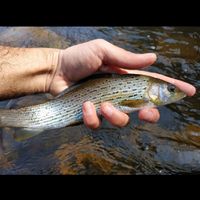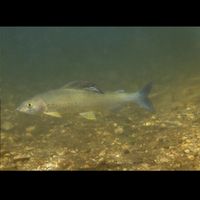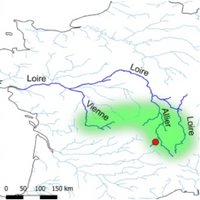Thymallus Ligericus.
Thymallus ligericus, also known as the Loire grayling, is a recently described and geographically restricted grayling species native to the Loire River basin in France. It is notable for its genetic uniqueness and conservation importance in the context of European freshwater biodiversity.
Taxonomy and Classification.
Thymallus ligericus is a member of the family Salmonidae, closely related to Thymallus thymallus. It was distinguished as a separate species based on genetic and morphological evidence. Its recognition highlights the overlooked diversity of grayling species in Western Europe.
Physical Characteristics.
The Loire grayling shares many features with its European counterpart but differs in:
- Slightly smaller average body size
- Distinctive genetic markers
- Subtle morphological traits including fin ray counts and body proportions
Adult individuals generally range between 25–35 cm but older fish can reach 50cm and exhibit the characteristic sail-like dorsal fin with modest coloration.
Habitat and Distribution.
Thymallus ligericus is endemic to the upper Loire River and its tributaries in central France. These rivers are characterized by clear, cold, and well-oxygenated waters, typically flowing through forested and rural landscapes.
Ecology and Life History.
Similar to other graylings, Thymallus ligericus feeds on aquatic invertebrates and exhibits spawning behavior in gravel beds during spring. Its life cycle is closely tied to the seasonal flow and temperature patterns of its native rivers.
Conservation Status and Threats.
Due to its limited range, Thymallus ligericus is considered vulnerable. Threats include:
- River modification and sedimentation
- Water pollution from agriculture and urban runoff
- Genetic introgression from stocked Thymallus thymallus
Conservation measures are critical to prevent hybridization and maintain habitat integrity.
Cultural and Scientific Significance.
The discovery of Thymallus ligericus has contributed to our understanding of freshwater fish speciation in postglacial Europe. It is of particular interest to conservationists and ichthyologists studying the impact of human activity on endemic species.



